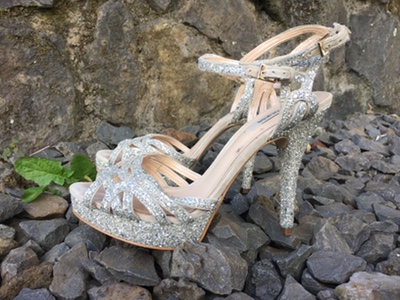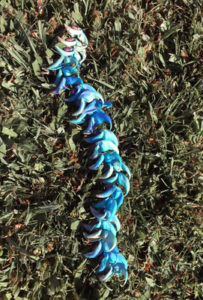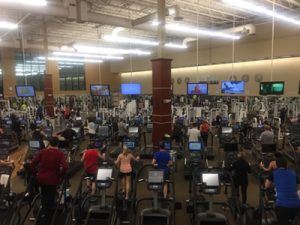
During the Hurricane Harvey catastrophe Melania Trump ignited a media firestorm for wearing stiletto heels on her way to Air Force One. Yes, she changed to sneakers when she arrived in Texas but many questioned such a pronounced focus on fashion on a day when she was to visit with people who had lost everything to the floods. When I saw video of the First Lady walking from the White House to the helicopter that would whisk her to Andrews Air Force Base, I immediately lost interest in these theoretical — be they political or feminist — critiques. Instead, I was fascinated by her gait.
Our feet, usually hidden in shoes, are an underappreciated part of our bodies. While only a small percentage of our total body size, they allow us to absorb literally tons of pressure each day and move thousands of miles over a lifetime. With twenty-six bones each, (one-quarter of all the bones in our body), thirty-three joints and over a hundred muscles, tendons and ligaments, our feet have the potential to skillfully navigate the most varied of terrains. When we cram a foot into a shoe that squishes the toes and raises the heel, we cut off our body’s natural ability to move with alacrity, freedom and grace.
Not only is the foot itself adversely affected by being immobilized, but a chain reaction is created from toe to head. Whether we are barefoot or in five-inch heels, our bodies constantly seek an innate default: head upright, eyes seeking the horizon. The position of the raised heel forces all the joints above it to compensate in a concerted effort to effect this upright head position. These compensations manifest differently depending upon the individual. Take a look around. A common response is for the pelvis to tilt forward creating a compensatory forward thrust of the ribcage. This in turn forces the neck and head to find a new balance point, creating a suboptimal alignment of the entire spine, which in turn puts undue pressure on individual vertebrae.
Along with whole-body biomechanical changes, the entire nervous system is compromised. Feet contain a large percentage of our mechanotransductors. These nerve endings send messages to our brain to guide our proprioceptive awareness—our understanding of where we are in relation to the space around us. With most of the foot lifted off the ground, the mechanotransductors cannot provide necessary information to the brain about where the body is in space. No matter how empowered a person may feel with some four or five additional inches of height, the brain has a fuzzy grasp of where one is in space. Accordingly, the body subconsciously feels unsafe and each step must be carefully crafted to prevent a fall.
Because of these adaptations, wearing heels requires a gait readjustment. A cursory study of the August 29th video shows that Mrs. Trump, instead of creating forward momentum from the dorsiflexion of the foot and extension of the back leg, utilizes a jerky bend of her knee to propel her lower leg forward. This common response to high heels makes it difficult to engage the usually powerful gluteal muscles that are essential to healthy, sustained movement. When these buttocks muscles are not engaged, there is a resulting side-to-side shift of the pelvis, which, while often admired for its alluring quality, is one of the main causes of gluteal amnesia. It is not uncommon for knee, hip and lower back pain to result.
Having grown up in the United States and absorbed many of our cultural notions of beauty, I appreciate a fashionable pair of shoes. I delight in my pair of sparkly four-inch heels and I bring them out for special occasions. However, I wear them fifteen minutes and then set them aside. I know (and feel) how they adversely affect my body and make sure to stretch my calves before I bust out on the dance floor barefoot.
Some people wear heels to be taller, others to be fashionable. Some, like Melania, can’t give them up — even on a blustery day. A few centuries ago in Europe, it was high fashion for men, not women to wear high heels. Whatever our choice for footwear, whether we choose to teeter on toothpicks or wear a shoe with a minimal differential between heel and toe, it’s important that we know the physiological effects of our fashion choices.
Wittingly or unwittingly, Mrs. Trump literally stumbled into Stilettogate. It’s a harsh spotlight for the First Lady. For the rest of us, it’s a different kind of choice. Stilettogait, or moving with ease, freedom and grace.


